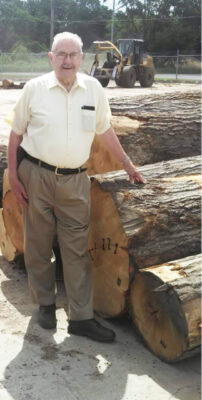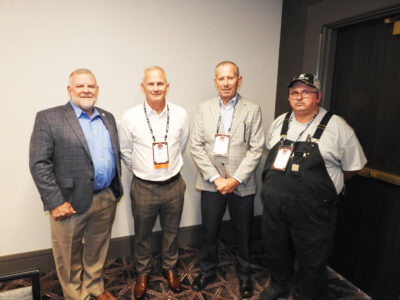Southeast Business Trends 2025 – Red And White Oak Fight For First In A Challenging Southeast
While the Oaks maintain first place, tariffs remain the number one worry for the hardwood lumber market. A mixture of reviews reveal that the market could be doing better but no one is willing to make any large investments, especially in housing due to uncertainty and pricing.
In Arkansas, according to one lumber representative, the market is “average” because he is not “receiving a lot of calls for new products or more of the same products. We’re able to sell everything I’m cutting but prices are not where they need to be. I’m just thankful we’re moving everything.” It is the same as six months ago.

He said Red and White Oak and Sweet Gum in 4/4, 5/4, No. 2 Common and “all the way to FAS” are what they offer. Red Oak is their bestseller.
“We produce a lot of railroad ties, and we sell all our upper grades to brokers. My customers are worried about the uncertainty of the future,” he commented, before noting his company doesn’t export.
While transportation and labor are fine, the biggest worry he has is trying to find new markets. “There aren’t many new markets out there. I think when the housing market starts back up and the interest rates go down, then everything will pick up.”
A spokesperson from a business that buys green lumber and sells it kiln-dried in Tennessee stated, when asked about the market, “The green lumber is somewhat sporadic. It seems there is a bit of a push because of a small lack of supply, which is an issue now. There is not necessarily an increase in demand for anything.
“The supply issue is about the same as six months ago but maybe it’s just catching up to people who had plenty of inventory, but now that inventory may be somewhat dwindling. The demand seems to be stable but not increasing and the tariffs and the EUDR are still pushing uncertainty on what customers will be placing orders for and how to handle certain circumstances,” he added.

He ranked most of the species they handle in order of their success with White Oak at number one and Red Oak in second, followed by Ash and Walnut. They also handle Poplar, but he did not rank its success. Those species are offered in No. 2 Common & Better and 4/4 through 8/4. He explained why Cherry and Ash are experiencing a bit of a turmoil, stating, “Cherry is difficult because China is the largest market for that. Currently, there are not many orders being placed. Ash has always been a big part of what we do and sourcing it has been a problem. The orders by the customers aren’t an issue even though they don’t want to pay any more money for the product.”
Their customers consist of domestic and overseas distributors, architectural millwork firms and furniture manufacturers. “Nobody knows what the future of the market is going to be when they don’t know what the tariff situation is going to do for supply and demand or retaliatory tariffs,” he added when asked about any concerns his customers may have shared.
He named interest rates as a factor negatively effecting his business as they are “effecting people’s ability to buy homes.”
In Georgia, a lumber representative blamed the tariffs for the dip in his market and that it is worse than six months ago.
He listed Red and White Oak, Poplar, Hickory and Gum as the species they offer in 4/4 and 8/4 in all grades including FAS & Better and Nos. 1 and 2 Common. “I don’t know if there is a species selling the best because they’re all about the same. We don’t dry any lumber, so we just sell green,” he noted.

Concentration yards that dry the products and sell them domestically or abroad are their customers. “Everybody is concerned about the market, especially with China as our largest consumer of exported wood,” he added.
He explained they are “down a little bit on labor” because “business is not great,” but transportation is a brighter spot, as they manage their own hauling.
Asked about any positivity he was feeling for the future, he stated they “do not have a whole lot of demand domestically and with the current trade war, exporting is challenging at best. They can’t settle on anything and that’s what’s frustrating. I feel like the administration believed that it would be easy, but these issues aren’t easy and there are consequences for those actions. I don’t feel like they were thoughtful enough when making those decisions. I hope we survive but it’s not good.”







